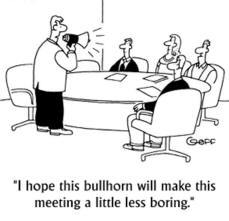 Just a few years ago I wandered into the Entrepreneurs Club as a freshmen. There were about 10 people in the room. Fast forward several years, and the Entrepreneurs Club is now one of the largest student organizations at Northeastern University and in July 2011 was ranked the #6 collegiate entrepreneurship club in the world, sitting near titans like Yale, Oxford and Harvard Business School. Each week, 75-100 students come out to the club’s exciting get togethers and our email newsletter is sent to a whopping 2,000 recipients in the University community every Monday. A team of 24 passionate student leaders run the organization, and do so with a $34,000 budget, all fund raised by the students themselves.
Just a few years ago I wandered into the Entrepreneurs Club as a freshmen. There were about 10 people in the room. Fast forward several years, and the Entrepreneurs Club is now one of the largest student organizations at Northeastern University and in July 2011 was ranked the #6 collegiate entrepreneurship club in the world, sitting near titans like Yale, Oxford and Harvard Business School. Each week, 75-100 students come out to the club’s exciting get togethers and our email newsletter is sent to a whopping 2,000 recipients in the University community every Monday. A team of 24 passionate student leaders run the organization, and do so with a $34,000 budget, all fund raised by the students themselves.
This semester, we’ve attracted incredible speakers like the founder of Newbury Comics, COO of CampusLive, President of Strong Women Strong Girls and many more. The Husky Startup Challenge graduated 18 new student ventures, awarded $5,500 in prizes and even had 300+ attendees, including President Aoun. Our members landed great co-op jobs at startups like Perkstreet and Zeo. We expanded into the College of Engineering with EGG weekend, where 9 new physical products were created and $2,000 in prizes awarded. On top of that, together with IDEA and CRI, we helped to launch the Prototype Fund and awarded over $15,000 in grants to students to build prototypes for their ventures.
The Entrepreneurs Club has been the defining factor of my college experience. Every co-op job and internship I earned as an undergrad was a direct result of meeting awesome people at the club. The E-Club was my first major management experience, and the learning opportunities were plentiful. More specifically, I learned:
1. How to manage people
From motivation to delegation, I gained exposure to many different management techniques and found a passion for team building and coordinating a large group of people.
2. When you have to be bureaucratic
I gained an understanding for why larger organizations start to add bureaucracy and learned that some bureaucracy is necessary while too much can stifle creativity and innovation.
3. The value of brand and design
The Entrepreneurs Club was so successful in part because of excellent branding and design work by our Creative Director, Wells Riley.
4. How to motivate students
Student engagement is a powerful tool. I learned about what motivates college students and how to get them excited and passionate about something in order to produce quality.
5. Event planning and logistics
The Entrepreneurs Club is an event planning power house. I learned how to properly execute high profile events and all of the little details that go into them
6. Coordinating with “the man” (administration)
Being in a leadership role in a student organization provides an opportunity to deal with upper-level administration. I leaned how to ask the right questions, get the right resources and gain significant exposure.
7. The importance of aritculating a mission and vision
I figured this out half way through the year: it is important to have a clear mission and vision that everyone in the organization understands. I worked with senior leaders in the group like Cory Bolotsky to craft a great one for the E-Club.
8. How to innovate your way out of challenges
Our team got thrown challenge after challenge this year, from having a room that was 3 sizes too small for our events to keeping everyone dedicated while balancing full course loads. Time after time we had to be creative to work around these challenges and succeed as a group.
9. The value of a strong culture and team unity
The E-Club’s culture might be its most valuable asset. We created an entity that people feel truly passionate about. As a result, they pour their hearts into making it the best it can be.
10. How work and fun should blend together as one
Finally, I learned a lot about work-life balance, and how to deal with a lack of one. Ultimately, it is great to have work be fun and let it all blend together. That is certainly how it was with team E-Club.
It has been an honor to lead such an outstanding organization, and our entire team of dedicated members worked so hard to make all of it possible.
To the Eboard of 2012-2013… have a blast, keep building and get us to #1 in the world.
 This time it wasn’t curiosity that did it. Complexity is a challenge, especially in business and product development. Take Apple, a company that prides itself on making things as simple and lacking complexity as possible. The iPhone has one button on the front. Customizations and “hacks” are minimally available in iOS. All of the devices look similar (iPad, iPod, iPhone) and they all sync effortlessly. People love this and pay a ridiculous premium for it. Customers want something sleek and simple.
This time it wasn’t curiosity that did it. Complexity is a challenge, especially in business and product development. Take Apple, a company that prides itself on making things as simple and lacking complexity as possible. The iPhone has one button on the front. Customizations and “hacks” are minimally available in iOS. All of the devices look similar (iPad, iPod, iPhone) and they all sync effortlessly. People love this and pay a ridiculous premium for it. Customers want something sleek and simple.  Back when I had the honor of working with
Back when I had the honor of working with  My
My  Have you ever went into a meeting with your business partner and he started to say something that was totally different from what you were thinking? Maybe even something you didn’t agree with? It would be pretty awkward, esspecially if you are sitting in front of a customer or new recruit. Luckily, there is a great way to avoid this: we call it “being one brained.”
Have you ever went into a meeting with your business partner and he started to say something that was totally different from what you were thinking? Maybe even something you didn’t agree with? It would be pretty awkward, esspecially if you are sitting in front of a customer or new recruit. Luckily, there is a great way to avoid this: we call it “being one brained.” Delegation is a wonderful thing. For my first few weeks as COO of
Delegation is a wonderful thing. For my first few weeks as COO of  Rewind to sophomore year of college, and I am a networking fanatic. I spent a ton of time hopping from event to event in Boston, piling up business cards in stacks across my desk. Looking back, this wasn’t the most effective strategy. Meetings lots of people and adding them on LinkedIn is a good first step but it needs to be solidified by building relationships. Instead of endless networking, consider the following approach I have since embraced:
Rewind to sophomore year of college, and I am a networking fanatic. I spent a ton of time hopping from event to event in Boston, piling up business cards in stacks across my desk. Looking back, this wasn’t the most effective strategy. Meetings lots of people and adding them on LinkedIn is a good first step but it needs to be solidified by building relationships. Instead of endless networking, consider the following approach I have since embraced: I don’t care how much technology exists nor how advanced our society gets – real people interaction and exceptional customer service will always be key in creating feelings. Feelings impact my buying decisions much more than a 10% off daily deal coupon, and here is why:
I don’t care how much technology exists nor how advanced our society gets – real people interaction and exceptional customer service will always be key in creating feelings. Feelings impact my buying decisions much more than a 10% off daily deal coupon, and here is why: When 3pm rolled around around this past Friday, I climbed up through the pile of papers on my desk at
When 3pm rolled around around this past Friday, I climbed up through the pile of papers on my desk at  Just a few years ago I wandered into the Entrepreneurs Club as a freshmen. There were about
Just a few years ago I wandered into the Entrepreneurs Club as a freshmen. There were about  I am very excited to announce that I will be joining the team at
I am very excited to announce that I will be joining the team at